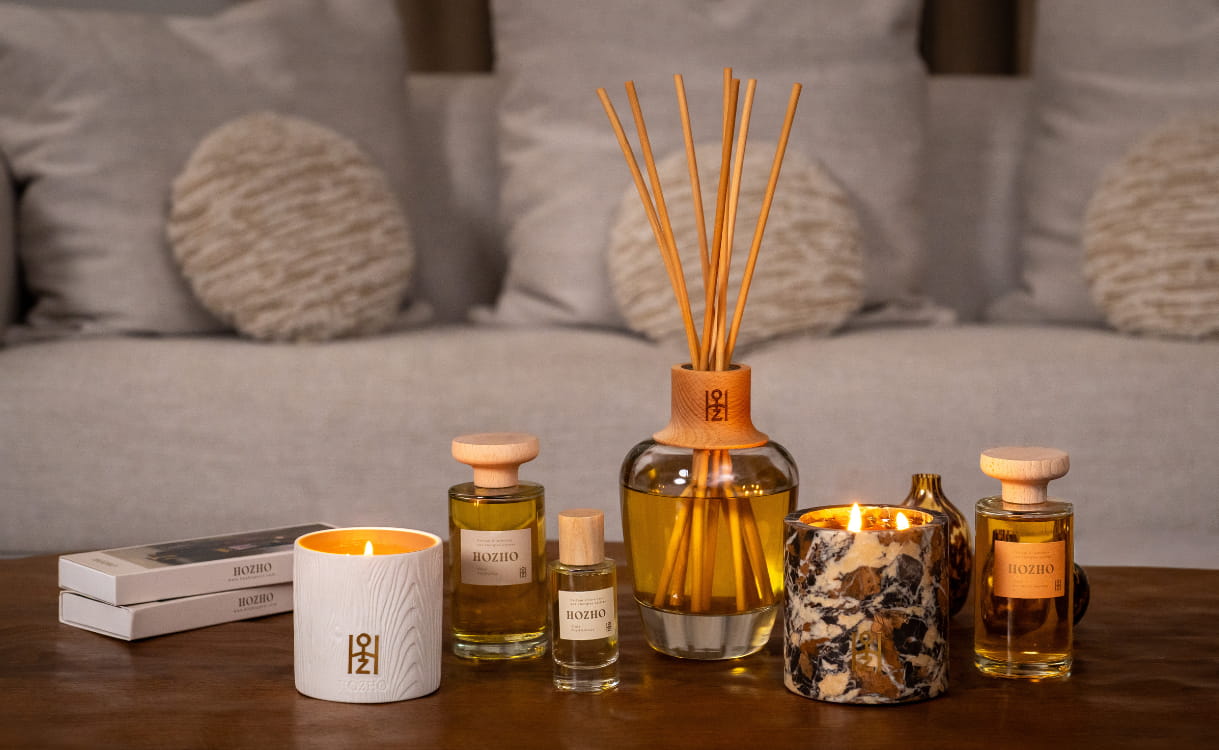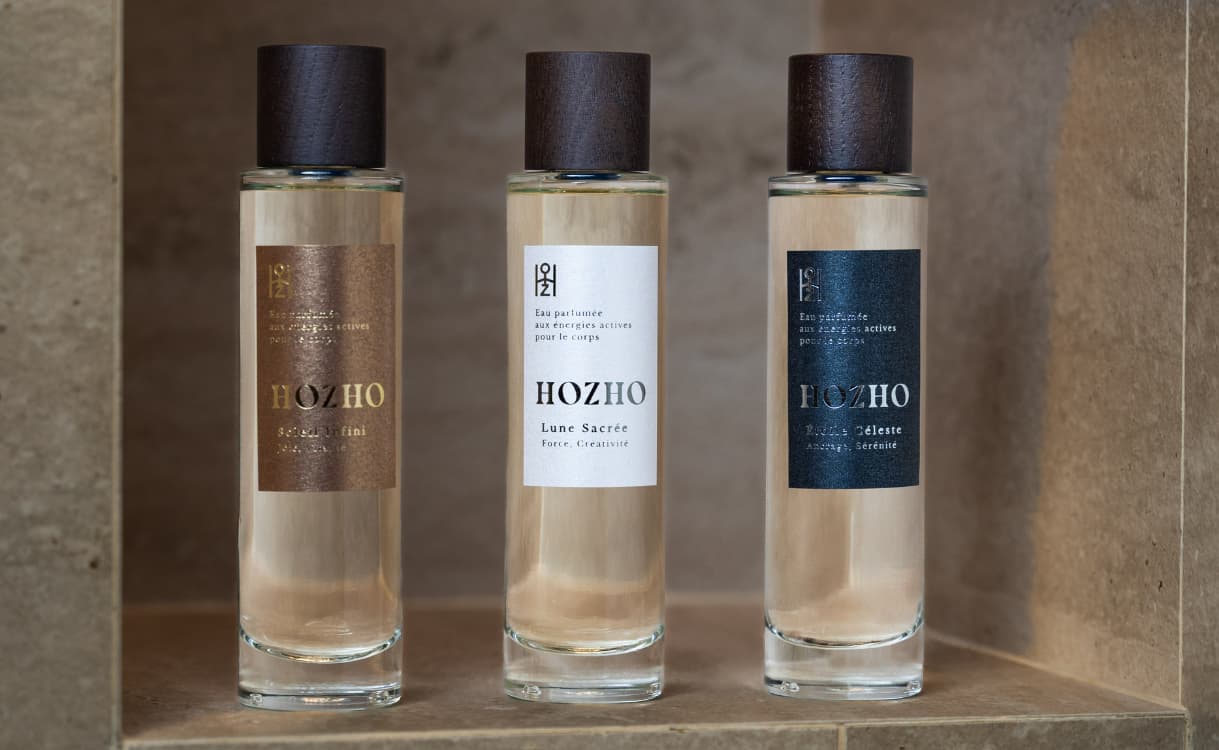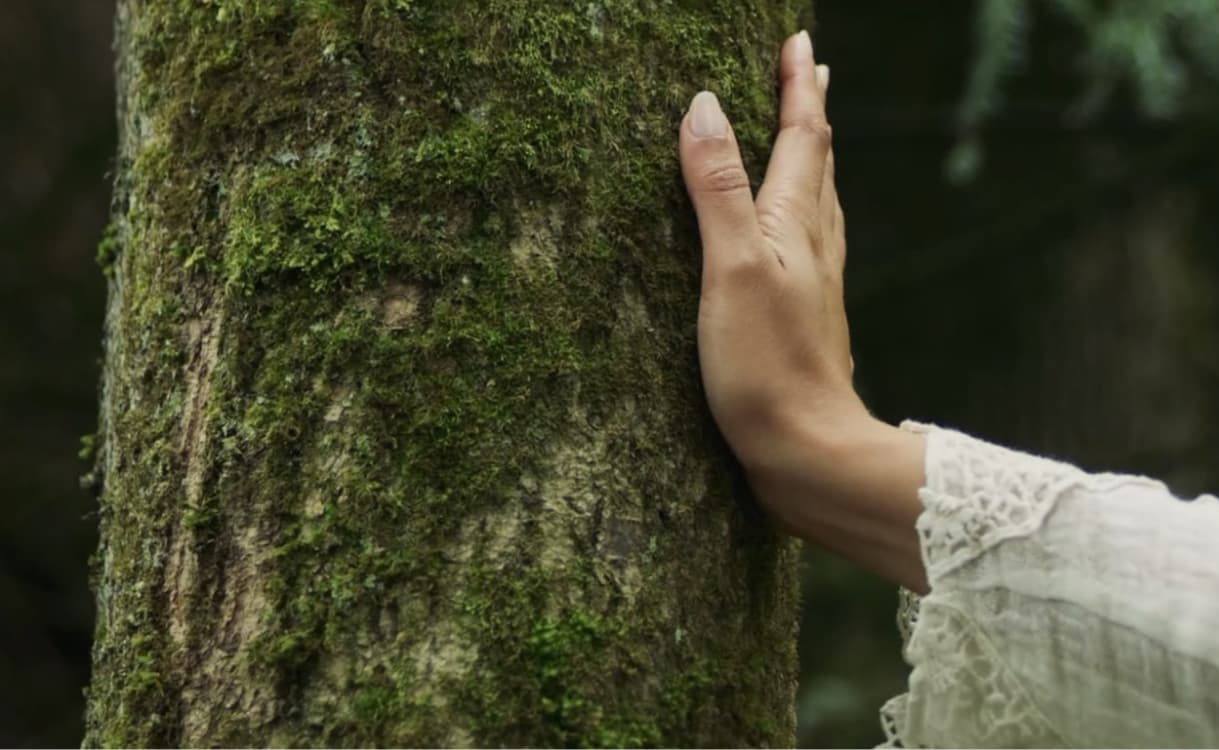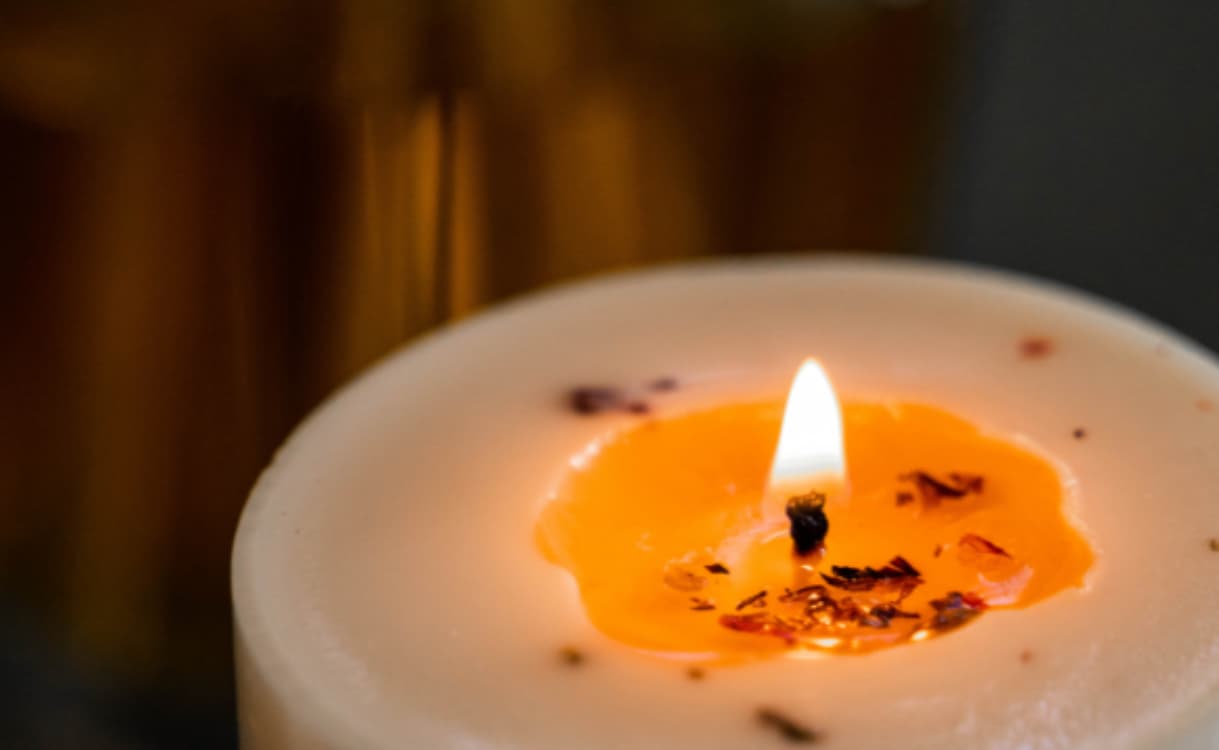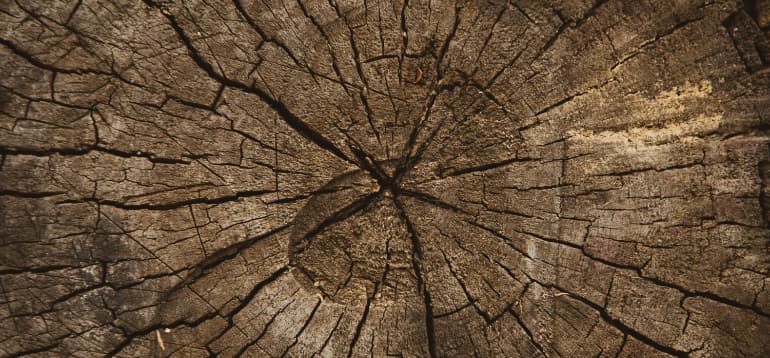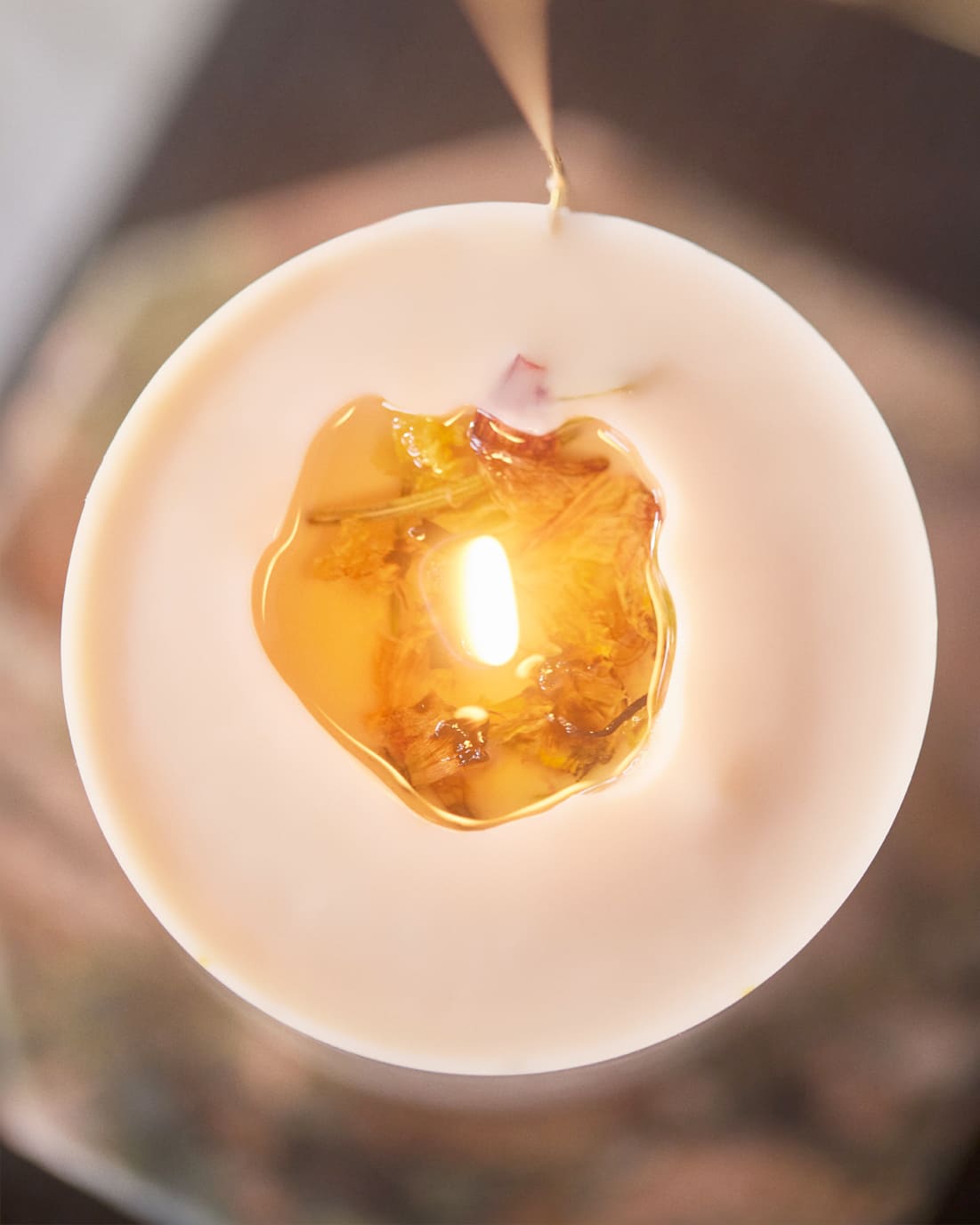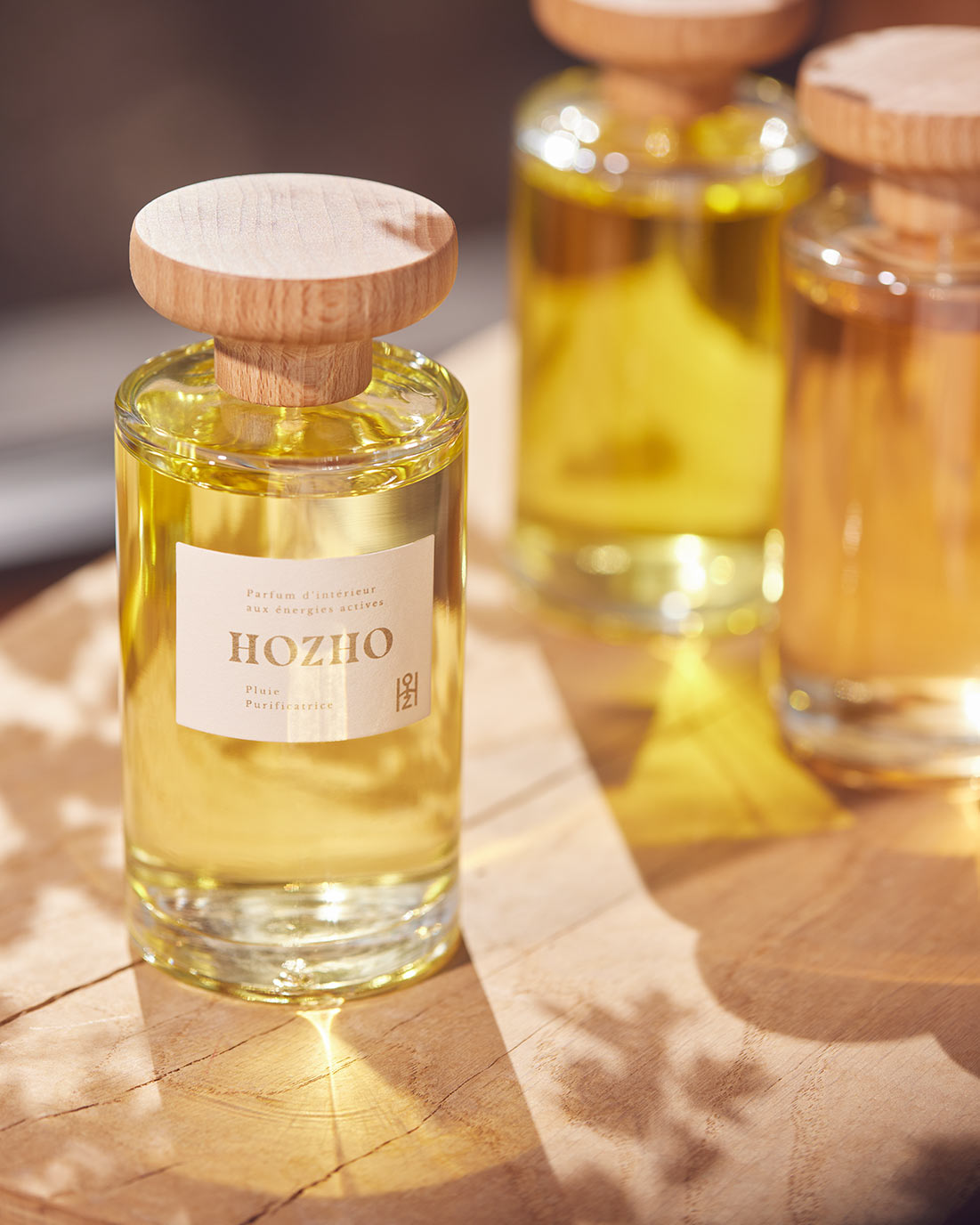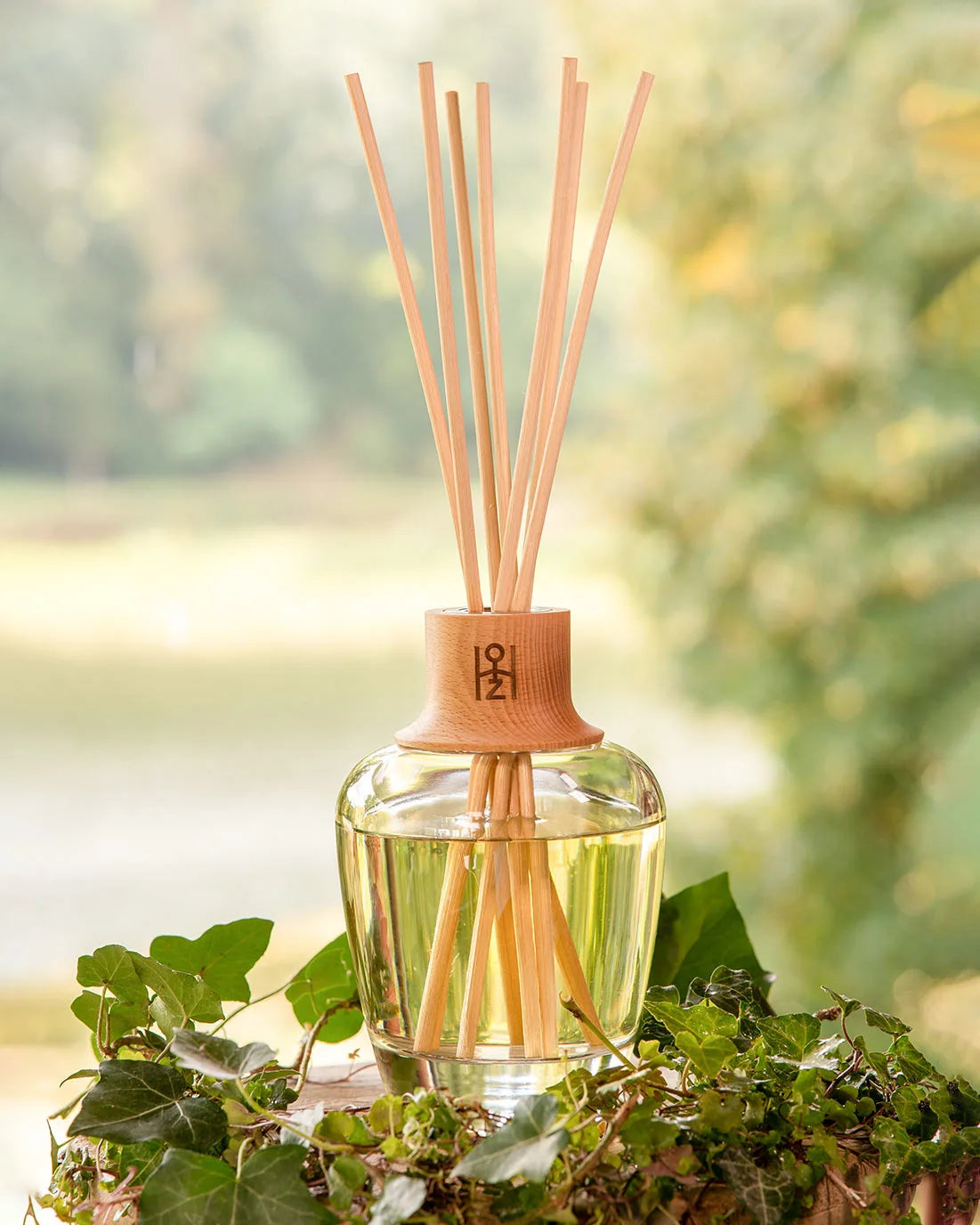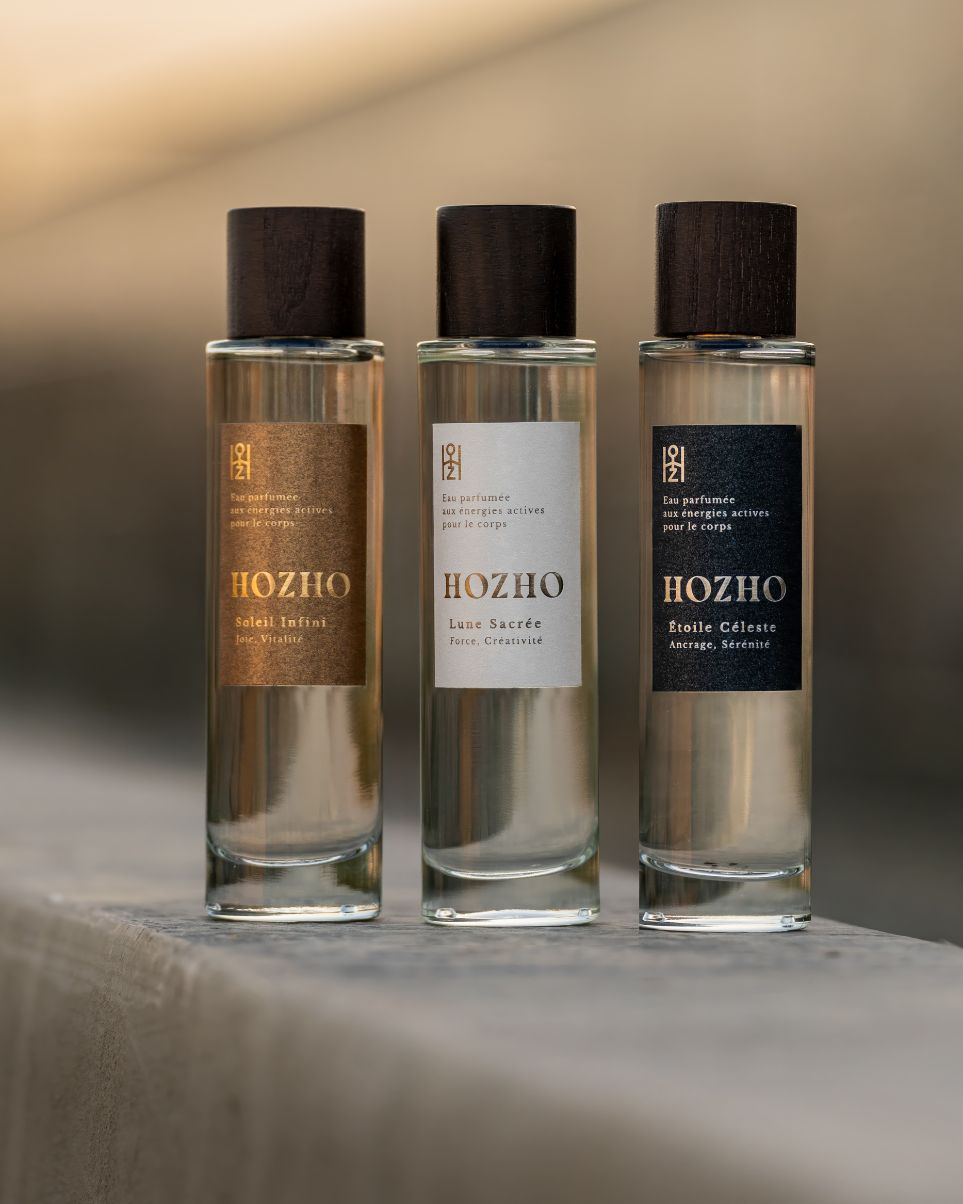Protective plants for the home: ancestral rituals for a harmonious and purified interior

Protective plants for the home are used to protect, purify, harmonize, or invigorate the energies of your home. Used in multiple traditions, they help cleanse negative energy and restore harmony in your home to feel better every day.
HOZHO, creator of energetic fragrances for the home, body, and soul, explains in this article which protective plants to choose and how to benefit from their properties. Let's discover these natural allies and their energetic virtues , recognized in Native American, Asian, and Celtic traditions.
The ancestral energetic virtues of protective plants
Plants have always played a central role in space purification rituals . Smudging rituals of sacred plants , the use of fragrant wood or resins , and the introduction of living plants into the home help to attract positive waves .
Indigenous peoples of North America traditionally burn white sage , cedar, or juniper to purify a place or person.
Similarly, in ancient China, feng shui already taught the importance of plants in balancing the energy of a home. The orchid would bring joy, the bamboo luck, and the peace lily purifies the air.
In Europe, Celtic druids celebrated their ceremonies under ancient oak trees , sacred trees that symbolized strength and protection.
Despite the diversity of these traditions, there is a common thread: certain plants are known to cleanse stagnant energies , protect the home from harmful influences and promote a climate of well-being.
Let's take a closer look at some of these major protective plants, as well as their uses in traditional medicines and energy disciplines.
Overview of protective plants for the home and their traditional uses
It is interesting to note that most of the so-called “energetic” plants are also medicinal plants , widely used in phytotherapy and aromatherapy . This dual action is explained by the essences they contain, whose fragrances release volatile active ingredients with physical, emotional and vibrational effects.
White sage to purify living spaces
An emblematic plant of Native American purification rituals , white sage ( Salvia apiana ) has been burned for centuries to cleanse places of evil spirits and negative energies .
Incorporated into smudging ceremonies (sacred fumigation), its bundles of dried leaves produce a thick smoke with recognized purifying properties. In North American tribes, sage is considered a medicinal and spiritual plant : it protects the home, but is also used for healing. It is notably used to regulate the menstrual cycle , combat premenstrual syndrome (PMS) and the effects of menopause. It is the plant associated with femininity.
Energetically, white sage is known for its cleansing properties. It repels negative energy, elevates the vibrations of a space , and promotes serenity of mind.
To learn more about this subject, and discover how to purify your home , consult our dedicated article.
Palo Santo to repel bad energies
Native to the forests of South America, Palo Santo (which means "sacred wood" in Spanish) has been used since ancient times by healers and shamans in the Andes. This resinous wood, when lit, gives off a sweet, woody scent reminiscent of copal .
It is traditionally burned during shamanic ceremonies to ward off negative energies and attract the protection of benevolent spirits . Palo Santo is often combined with white sage to enhance the effectiveness of the purification ritual , particularly when moving in or after a difficult event. It thus creates an energetic shield around the home .
Beyond its spiritual role, this sacred wood from the Bulnesia sarmientoi tree also has locally recognized medicinal properties. In essential oil, it is said to be used to soothe certain skin and stomach ailments.
Its use has spread far beyond South America, as its calming effects on the mind and atmosphere are appreciated.
Myrrh, a sacred resin that protects the home
An aromatic resin derived from the myrrh tree ( Commiphora myrrha ), myrrh has been revered since ancient Egypt for its purifying and spiritual properties. Burned as incense, it was part of sacred offerings to deities and was used in embalming.
Historically, it was even credited with magical and aphrodisiac powers in Near Eastern cultures. Energetically, myrrh smoke protects space , raises the vibrational rate and creates an atmosphere conducive to emotional and spiritual balance .
Even today, myrrh is still used in churches as an incense to bless and purify the air. It also holds a prominent place in traditional medicine. In Ayurvedic and Chinese medicine, myrrh is used for its antiseptic, anti-inflammatory, and calming properties . It promotes wound healing and relaxes the nervous system.
Both energetic, spiritual and physical care , myrrh embodies the protection of the home and the soul.
Patchouli, earth protection and prosperity
Recognizable by its deep, earthy scent, patchouli ( Pogostemon cablin ) is a plant from tropical Asia whose use has spread from India to Europe.
In the Indian Ayurvedic tradition, patchouli is considered a sacred plant associated with Lakshmi (goddess of prosperity and beauty): it is used in religious ceremonies and purification rituals to attract abundance and luck.
In Indonesia, this aromatic plant is used in offerings and wedding ceremonies, a symbol of spirituality and connection to nature .
On an energetic and esoteric level, patchouli is known to dissipate stagnant and negative energies , anchoring positive vibrations. Its powerful fragrance fixes the mind in the present moment, facilitates meditation, mental clarity and develops intuition.
Sandalwood and energetic and spiritual harmony
Sandalwood ( Santalum album or related species) is one of the most prized incense in South and East Asia for its sweet and soothing aroma. In India, sandalwood is essential to Hindu rituals : its wood is burned during pujas (offering ceremonies) and its powder is used to mark the forehead with tilak as a sign of blessing.
Its energetic virtues make it a purifier and a harmonizer , it is used to cleanse the aura and calm the mind. In Hindu and Buddhist traditions, sandalwood is said to help open the crown chakra and promote deep meditation by balancing the mind.
Also called the crown chakra or Sahasrara in Sanskrit, the coronal chakra is the seventh chakra in the Indian energy tradition . It is located at the top of the skull, like an opening to infinity, and represents our connection to the universe, to the divine, to higher consciousness.
Sandalwood thus symbolizes purity and wisdom: an Indian proverb states that “sandalwood perfumes even the axe that splits it,” for its power to transform negative into positive . In aromatherapy, sandalwood essential oil is known to reduce stress and anxiety. It is also used for its antiseptic properties on the skin.
Bamboo, a protective and lucky catalyst
A symbol of luck, flexibility, and prosperity in Asia, bamboo occupies a prominent place in the art of feng shui. This vigorous, evergreen, and fast-growing plant is considered a true catalyst for positive energy in the home.
In China, the "lucky bamboo" (often the Lucky bamboo , a variant of dracaena similar to bamboo) is frequently placed at the entrance to homes or on desks to attract success and prosperity. According to tradition, its straight stem symbolizes spiritual elevation and resilience in the face of hardship (bamboo bends, but does not break).
Energetically , it is said to protect the home by deflecting harmful influences and balancing the flow of Chi (life energy) in the space. Bamboo is also said to bring peace to the family and promote growth (it is given at housewarming parties as a sign of good omen).
In addition to its symbolic value, bamboo has practical benefits: it improves air quality by absorbing CO₂ and serves as a natural barrier against prying eyes or noise. Having bamboo in your home thus combines aesthetics, ecology, and energy protection.
Explore our article on home energy cleansing to learn more.
Oak, protective strength and anchoring
A majestic tree of European forests, the oak has been a powerful symbol of strength, longevity, and protection since ancient times. Celtic druids venerated the oak, which they considered the "king" of trees, dedicated to the gods of thunder (Taranis among the Celts, Thor among the Norse, Zeus among the Greeks).
Sacred ceremonies were held around the oldest oak trees, as the tree was believed to have the ability to attract blessings from heaven and ward off evil influences . Its acorns were also considered sacred, symbols of potential prosperity. In European folklore, contact with an oak tree (leaning against its trunk or carrying a piece of its wood) confers protection and courage.
Oak wood, almost rot-proof, was used to build houses, ships, and even cathedral frames. It was believed that its protective strength would benefit buildings sheltering human life.
In herbalism , oak bark is used for its medicinal properties (astringent, antiseptic). But it is above all on the vibrational level that oak stands out: it anchors energies, brings a feeling of stability to the home and helps to remain firm in the face of trials.
Placing an oak object (furniture, sculpture, etc.) or diffusing its aromas in the house is inviting the spirit of the oak to protect the place with its solid and benevolent presence.
Cedar and the protection of the home
Considered a sacred tree in many cultures, from the Middle East to North America, the cedar is renowned for its purifying and protective powers.
In Native American rites, cedar is one of the "Four Sacred Plants," along with sage, sweetgrass, and tobacco. Burning cedar (often in the form of small bundles or powder on hot coals) serves to cleanse the atmosphere and attract beneficial energies.
First Nations call it the “Tree of Peace,” and its smoke, balancing masculine and feminine polarities, is used to promote serenity, prayer, and harmony in the home .
Beyond America, cedar was also prized in Mediterranean antiquity; the Egyptians used its oil to embalm mummies (proof of its power of preservation and therefore protection against corruption ); the Temple of Solomon in Jerusalem was built of cedar wood, a symbol of purity and divine protection.
In aromatherapy, cedarwood essential oil (obtained from varieties such as Atlas cedar or Himalayan cedar) is known to ground and comfort the spirit . It also acts as an atmospheric antiseptic. Having cedarwood in your home, in the form of incense, wood, or scented extract, helps build an invisible barrier against negative energies .
The cactus, guardian of the waves and symbol of resilience
Among contemporary ornamental plants, the cactus surprises with its role as an energetic protector. In feng shui , it is considered a guardian of the home : its thorns are said to be able to form a barrier against unwanted energies, including electromagnetic waves emitted by our electronic devices.
Moreover, its ability to survive in extreme conditions makes it the very symbol of resilience and longevity . In some cultures, it is customary to place a cactus near the entrance of the house to protect the inhabitants from evil spirits and attract luck .
Its deterrent thorns are seen as antennas that absorb negative waves and prevent energetic “intruders” from entering our intimate space. However, be careful not to place a cactus too close to resting places (such as next to a sofa or a bed), because its outward-projecting thorns can also create aggressive energy. The ideal is to place it near a window, on a balcony or in a transition area, where it will play its role as a protective shield .
In addition to its symbolic virtues, the cactus (especially certain varieties like the nopal ) offers concrete benefits: it purifies the air at night by absorbing CO₂, and its juice is used in traditional medicine as an anti-inflammatory and source of nutrients.
Here is an atypical protective plant which, under its austere appearance, hides a real treasure of positive energy for the home .
From tradition to modernity: natural synergies for a harmonious home
Understanding these sacred plants and their energetic properties is ideal for enjoying their benefits every day. HOZHO's fragrant home, body, and soul care products are specifically designed to protect, purify, harmonize, and invigorate the energies of your home.
We have drawn on ancestral wisdom and this botanical heritage to formulate energetic perfumes with powerful and beneficial fragrances . At HOZHO, we want to transform every moment of life into rituals dedicated to your inner well-being. Our candles, sprays and diffusers are made from around thirty plants with incomparable energetic properties.
Of course, we find white sage, Palo Santo, cedar, patchouli, oak, bamboo, myrrh, but also extracts of rose and benzoin. These ingredients are cultivated with respect for the environment and processed by hand so as to preserve all their vibrational energy .
Our unique, non-toxic and non-polluting creations offer a true olfactory journey , chase away stagnant energies and raise the vibrational rate of the home. These collections create a lasting, serene atmosphere conducive to the well-being of the whole family.
Sources:
Florence Laporte , Listening to the Tree – Tree of the Month: The Oak (Celtic symbolism and energetic properties of the oak), consulted on the website Listening to the Tree .
Link: Tree of the Month – The Oak
Santé Nature & Cie , The crown chakra , sd, consulted on the site santenatureetcie.com.
Link: https://santenatureetcie.com/le-chakra-couronne/
University of Ottawa , The Garden of Sacred Medicines – The Four Traditional Remedies Offered to Indigenous Peoples , 2024.
Read the article on uOttawa.ca

